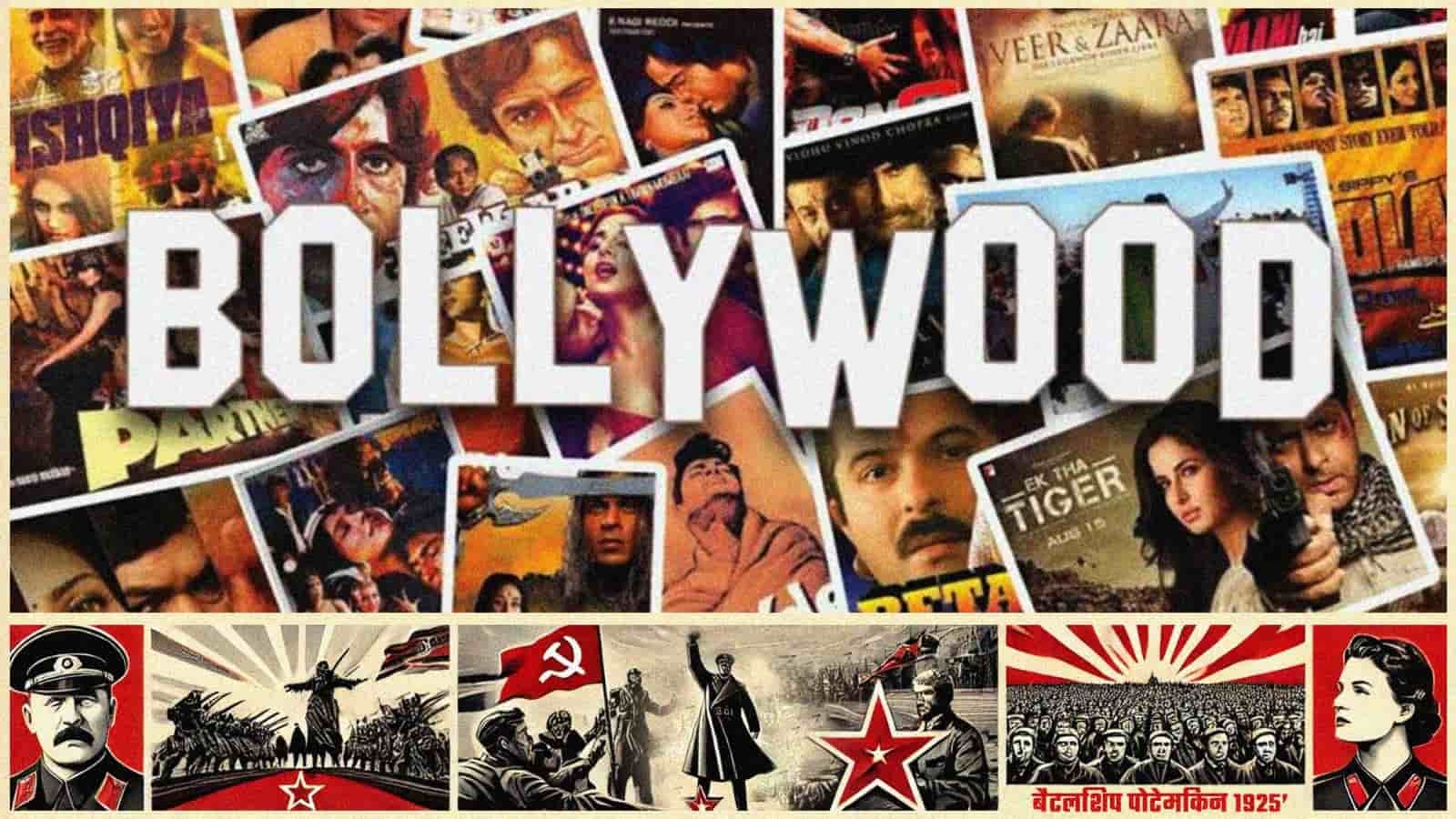Indian Culture and Cinema: The Conspiracy of Left-Sponsored Propaganda Films
11 Sep 2024 09:31:39

The history of Indian art and culture is both rich and glorious. In Indian tradition, art has always been a source of entertainment, but its purpose has extended beyond mere enjoyment. It has been created for the greater good of humanity.
A prime example can be found in the ancient text ‘Natyashastra.’ At the end of Satyuga, when Treta Yuga began, society started losing its moral compass.
People strayed from religion and followed the paths of falsehood, violence, and unrighteousness.
Alarmed by this shift, the Devtas urged Brahmaji to create something that could restore morality in society and inspire people to follow the path of righteousness and truth.
In response, Brahmaji extracted values from the four Vedas and inspired Bharat Muni to compose the ‘Natyashastra.’
This text outlines the rules and methods for Indian drama, dance, and music and remains relevant even today.
Bharat Muni’s first play was based on the ‘Samudra Manthan,’ the churning of the ocean between the gods and demons for the nectar of immortality.
Vishnu’s incarnation as Mohini, through drag acting, is also tied to this event. Researchers consider it to be the world’s first act of ‘drama’ and ‘theatre,’ marking the beginning of global theatre history.
History bears witness to the fact that the destruction of India’s cultural heritage and rich tradition of art was a well-planned strategy by invaders.
They deliberately demolished research institutions, play theatres, and establishments like Nalanda University.
The invaders understood that India’s art and culture were the nation’s real strength. By dismantling them, they could weaken the very foundation of Indian civilization.
The Cinema Conspiracy
To dismantle the ongoing conspiracy against our culture, we need to remain aware and vigilant, especially when it comes to cinema.
Over the last 60–70 years, Indian cinema has been infiltrated by propaganda, primarily leftist in nature. To understand this better, we must delve into the “History of Propaganda Films.”
After the constructive creation of cinema, it was inevitable that certain groups would attempt to exploit it.
Cinema, which began in 1895 and flourished, became a battleground 30 years later, when leftist ideologues began to meddle with its traditional structure.
This marked the beginning of the “Era of Propaganda Films” in cinematic history, where cinema was no longer seen purely as a medium of entertainment or art.
Instead, it became a powerful tool for disseminating political, social, communist, Marxist ideologies, and false narratives.
Globally, propaganda films gained momentum in the early 20th century, when cinema was increasingly used to propagate ideologies.
Notably, this trend began in the Soviet Union with filmmaker Sergei Eisenstein, who made films like Battleship Potemkin (1925).
These films depicted class struggles between laborers and capitalists, promoting the 'Radical Operation Theory' and the Red Revolution.
After the release of Battleship Potemkin, unrest and rebellion spread across society, leading to the film being banned in several countries, including the West and America.
Following this, propaganda films continued to be made in various nations to spread communist ideas.
The Shift in Indian Cinema
In the early days of Indian cinema, films were primarily aimed at reflecting society and upholding the ideals of Indian culture.
Films like Raja Harishchandra (1913), India’s first silent film, and Mohini Bhasmasur and Krishna Janm, promoted religious, cultural, and moral values.
However, over time, a disturbing shift occurred in Indian cinema, where deliberate efforts were made to portray Hinduism, Indian traditions, and culture in a negative light.
This trend continues today under what is known as the ‘Anti-India Narrative.’
This shift, particularly noticeable after the 1970s, involved the distortion or mockery of Hindu symbols and religious beliefs in films.
Hindus were often portrayed as superstitious, fanatical, or oppressive. The leftist ecosystem used Bollywood, film festivals, celebrities, influencers, and social media to propagate their anti-national ideology. These tools became instruments of propaganda.
Films selected in communist-sponsored film festivals are not just honored for their cinematic artistry but are often chosen for promoting narratives aligned with communist ideologies.
In these festivals, awards are given to films that champion topics like LGBTQ+ rights, gender equality, freedom, multiculturalism, Pride Month, secularism, and the breakdown of traditional family structures.
For instance, recent films like Darlings, Jaane Jaan, Haseen Dillruba, and Bad News depict extramarital affairs as light-hearted entertainment.
Through fake reviews, articles, videos, and promotional activities, the public is often lured into consuming these narratives.
On the one hand, vulgarity is promoted in the name of parallel and realistic cinema, while on the other hand, nationalist films are criticized by leftist writers.
Filmmakers like Satyajit Ray introduced the world to ‘parallel cinema.’ However, today, an entire ecosystem works to redefine this genre, involving writers, corporate owners, global film scholars, festivals, celebrities, and influencers.
For example, this year’s National Award-winning films—Attam, Kantara, Gulmohar, and Kadhikan—are all parallel films, but they are not given the recognition they deserve.
Meanwhile, films based on true events, such as The Kashmir Files and Ajmer 1992, are dismissed as propaganda.
We know that real propaganda in cinema began after 1925, and it is time to boycott anti-India film festivals. Leftists strategically use their tools to raise issues like LGBTQ+, Pride Month, and others, promoting them periodically.
In contrast, Indian thought and Indianness embrace everyone and uphold every moral value.
Conclusion
Today, it is crucial to understand the conspiracy behind anti-India propaganda films and to support cinema that represents Indian thought and values.
Article by

Mahi Dubey
Film Director and Editor